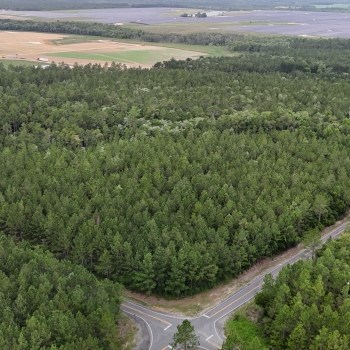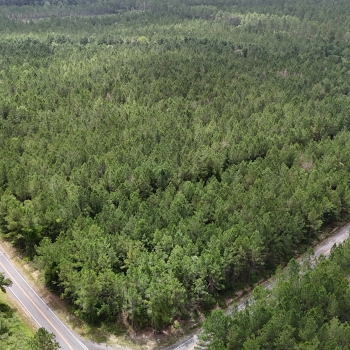
Land for Sale in Walton County, Florida
VEGETABLES, TIMBER, AND FISHINGSalt-tolerant flatwoods, cypress domes, and dry upland pines stretch across north Florida's panhandle in Walton County. Land here supports diverse uses like hay production, beef cattle grazing, managed pine silviculture, and recreation. Many parcels lie near springs, creeks, and forest corridors, with some reaching into high recharge areas for the Floridan aquifer. The county also holds ties to the Choctawhatchee River, historic turpentine camps, and a scenic beach-to-backwoods culture found nowhere else in Florida.

- 1 to 2 of 2
- 1
Why Walton County FL Land Attracts Buyers
Walton County sits where north Florida’s agricultural belt meets the white-sand Gulf coastline. For land buyers, that means access to productive soil, diverse ecosystems, and flexible zoning across rural acreage. Whether you’re planning timber rotations, building a homestead, or hunting on the weekends, Walton offers a blend of options that few counties can match. The inland portions support forage, corn, and cattle operations, while the forested tracts stretch across sandhills, wet savannas, and fire-managed pine ecosystems.
Unlike more developed counties to the south, Walton still holds large parcels with uninterrupted habitat. Those looking for secluded build sites, wildlife corridors, or investment timberland will find both young and mature stands, often near state forest boundaries. Buyers with an eye for conservation or recreation value Walton’s access to rare species, hiking trails, and spring-fed creeks. Plus, proximity to towns like DeFuniak Springs and Freeport ensures you’re never far from essentials, even in remote areas. This county bridges practical use with scenic value, making it a long-term favorite for rural buyers.
Natural Land Features that Make Walton County Stand Out
Walton County features an unusually rich landscape for rural buyers—longleaf pine uplands, seepage bogs, blackwater rivers, and flatwoods all share space with historic farmland. The Choctawhatchee River cuts through the eastern half of the county, while rare pitcher plant prairies and sandhills border public forests. Elevation changes support natural springs, while lowland hammocks foster cypress groves and tupelo swamps. These features make the land not just usable but ecologically valuable.
Choctawhatchee River Corridor
The Choctawhatchee River runs through the eastern county, bordered by hardwood bottoms and oxbow lakes. It supports rich biodiversity and floodplain farming.
Pitcher Plant Bogs
Wet prairies in central Walton host native carnivorous plants like yellow pitcher plants. These bogs are unique to the Gulf Coastal Plain and require fire to thrive.
Longleaf Pine Sandhills
Dry uplands once dominated by longleaf pine now serve as habitat for gopher tortoise and quail. These areas offer scenic views and easy access for timber or grazing.
Timber, Forage, and Pasture Investment Land
Land in Walton County often serves multiple purposes—timber rotations, cattle grazing, and forage crops all share the same boundaries. The climate supports fast-growing pines, while open pasture thrives on upland sites with sandy or loamy soils. Smaller producers and investment buyers alike are finding opportunities in mixed-use tracts, especially those near mills, highways, and local co-ops. These uses support long-term income or self-sufficiency, depending on the buyer's goals.
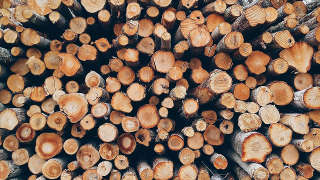
Pine Timber Rotations
Slash and loblolly pine are widely planted in Walton for pulp and sawtimber. Many tracts are already under management, with access to mill infrastructure and replanting services. Landowners benefit from stable demand, especially in regional forestry co-ops. Burn regimes can also improve understory for wildlife and help regenerate native longleaf pine.
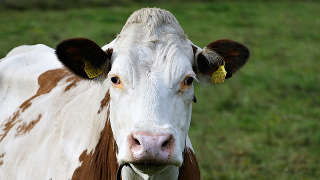
Beef Cattle and Pasture
Cow-calf operations are well suited to Walton's open grassland areas. Improved Bahia and Bermuda grasses provide summer grazing, while round bale hay supports winter feed. Fencing and cross-fencing are common, and parcels near water sources offer year-round viability. Buyers often establish rotational systems on tracts with tree-pasture blends.
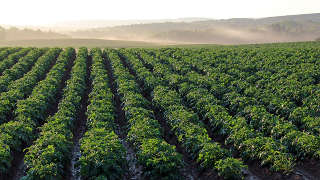
Hay and Forage Production
Forage fields supply feed for cattle and horses, often with multi-cut Bermuda or mixed seasonal grasses. Some growers sell direct to buyers across the Panhandle. Irrigation improves yield in drier years, but most land uses natural rainfall. These parcels can supplement livestock or support a small-scale forage business.
Hunting and Wildlife Habitat Across Walton County FL
Walton County offers exceptional habitat diversity for hunters and conservation-minded buyers. Upland pine tracts support gopher tortoise and bobwhite quail, while creek bottoms and wetland edges hold waterfowl, amphibians, and songbirds. Some parcels border state lands or conservation easements, adding corridor value for wildlife movement. Freshwater and brackish fishing opportunities span the Choctawhatchee River, coastal dune lakes, and nearby bay systems.
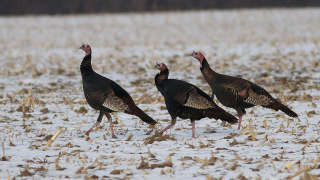
Wild Turkey
Turkeys use edge habitat and pine understory, especially in burn-managed tracts. Spring hunting is strong in mixed pine-hardwood regions.
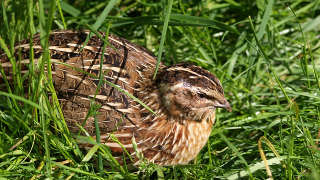
Bobwhite Quail
Quail populations are being restored in parts of Walton County. Habitat work includes thinning, fire use, and native ground cover.
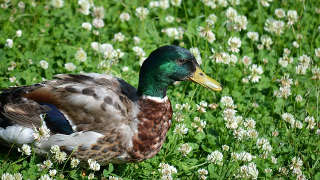
Ducks and Waterfowl
Wood ducks and teal use cypress sloughs and seasonal wetlands. Wintering flocks move through coastal estuaries and floodplain impoundments.
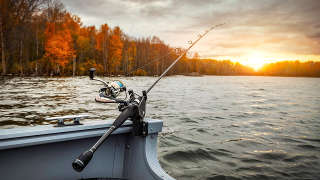
Freshwater Fishing
Lakes and rivers support bass, catfish, and bream. The Choctawhatchee River and its oxbows provide year-round freshwater angling.
Living Local: From Panhandle Pines to Coastal Traditions
Walton County carries a unique blend of panhandle farmland and old-Florida coastal culture. Inland towns like Paxton and Glendale retain strong agricultural roots, while DeFuniak Springs centers around the historic Chautauqua Circle and Victorian-era public spaces. A short drive south, Freeport and Santa Rosa Beach link the county to emerald Gulf waters, yet many rural properties remain just minutes from these amenities.
Buyers looking to escape HOA restrictions, create a working homestead, or hold long-term land investments will find uncommon flexibility here. From bottomland hardwoods to beachside backroads, Walton offers a place where pine trees meet salt breezes, and landowners write their own story on every acre.
Land for Sale in Neighboring Florida Counties
Walton County borders several other North Florida regions offering rural land options. Whether you're comparing pastureland, timber tracts, or recreational parcels, these nearby counties provide additional opportunities for buyers.
Holmes County
Holmes offers row crop land, cattle pasture, and creekfront property. Low taxes and rural zoning attract homesteaders and investors.
Okaloosa County
Closer to the coast, Okaloosa offers land near fishing, forests, and military installations. Timber and hunting tracts are common.
Washington County
Washington County features pine land, lakes, and family farms. It’s ideal for recreation or building a remote homestead.
FREQUENTLY ASKED QUESTIONS
What kinds of fish can you catch in Walton County?
Anglers in Walton County can fish for largemouth bass, chain pickerel, and bluegill in natural lakes and blackwater rivers. The Choctawhatchee River and its oxbows also hold crappie and catfish, with seasonal migrations bringing in striped bass. For saltwater fishing, Choctawhatchee Bay offers speckled trout, redfish, and flounder not far from the Gulf.
Are there any unusual or rare animals in the area?
Yes. Walton County is home to the federally threatened gopher tortoise and several rare pitcher plant species in bog habitats. Birders can spot swallow-tailed kites in summer and sandhill cranes in some winter fields. Coastal areas may also support nesting habitat for the flatwoods salamander and the endangered red-cockaded woodpecker in mature longleaf pine.
What’s the agricultural economy like in Walton County?
Farming in Walton County includes hay, corn silage, and cattle operations, with many producers maintaining small pasture-based systems. Irrigated vegetable production exists in pockets, particularly where good soils and water access align. Timber rotations remain a large part of land use, especially for pine plantations on sandy soils.
Is poultry farming common in Walton County?
No, poultry is not a primary industry here. Neighboring counties to the north and west see more broiler and layer operations. In Walton County, pasture-based beef and forage crops are more typical for livestock production.
What row crops grow best here?
Growers in Walton County plant corn for silage, soybeans, and small grains when conditions allow. Sandy loam soils near river terraces offer some flexibility, but yields depend heavily on rainfall and irrigation. Watermelons and peas have also been grown on a small scale for local markets.
Is timberland a good investment in Walton County?
Yes, many tracts have been managed for pine production, especially loblolly and slash pine. The climate supports fast growth, and access to mills in north Florida and southern Alabama adds long-term value. Some parcels include legacy longleaf pine under conservation or restoration.
Sell Your Florida Land From Groves to Glades— We Bring Buyers
Selling land in Florida? Tutt Land Company makes it easy to connect your rural acreage with qualified buyers across the Southeast. Whether it’s pastureland in Okeechobee, timber in Liberty County, or hunting land in Madison County, our team has the reach and experience to get it sold.
We market your land with precision—through national listing platforms, custom property videos, social media, print, and direct outreach. From citrus groves to pine flats, Florida land deserves more than a listing—it needs a strategy. With over 80+ years of experience and deep Southeastern roots, we know how to showcase what makes your property valuable.
If you’ve got Florida land, Tutt Land brings the buyers.
Sunshine, Soil, and Sales Turn Your Love for Florida Land into a Career That Grows
Florida is more than coastline—it’s cattle country, timberland, and some of the best recreational property in the Southeast. If you know the palmetto-covered backwoods of Levy County, the oak hammocks in Suwannee, or the longleaf pines near Ocala, you belong on the Tutt Land team.
As a land professional with Tutt Land Company, you’ll represent rural properties across Florida, helping buyers and sellers make smart, land-based decisions. Whether you’re just getting started or ready to take your career further, you’ll gain marketing support, training, and the power of a 80+ year legacy built on trust and results.
So whether you're yelling Go Gators!, chopping the air for FSU, shouting Go Canes!, backing the UCF Knights, roaring for the South Florida Bulls, or repping high school powerhouses like Lakeland Dreadnaughts and St. Thomas Aquinas Raiders—if land is your game, Tutt Land is your team.
